Eggs are full of nutrients for excellent benefits to humans and plant health, meaning the inside food content is for humans and the empty egg shells for plants. Eggshells are a great nutrient supplement for plants and soil. They are full of nutrients, especially rich in calcium contents. In this article, learn how to enrich soil of indoor plants with eggshells.
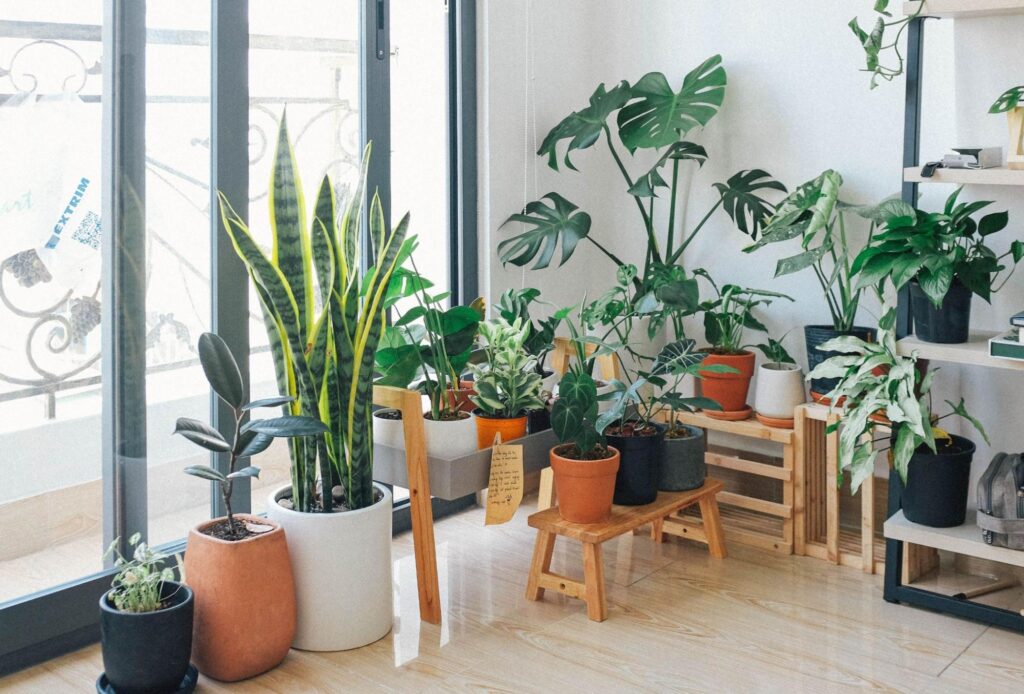
A diverse collection of indoor potted plants to keep the environment fresh and air purifier
Egg shells provide all essential nutrients to plants and help prevent blossom end rot. Not only this, these eggshells improve the soil aerations, texture, and health. The plants are grown in soils amended with coffee grounds, and eggshells produce full bloom with vigorous growth.
Eggshells in potted plants are a source of organic fertilizer because they are made of calcium carbonate with traces of nitrogen and magnesium. These nutrients are in a 40-0.4-0.4 ratio with many other nutrients to assist indoor plants’ growth.
What are the Different Ways to Use Eggshells for Indoor Potted Plants?
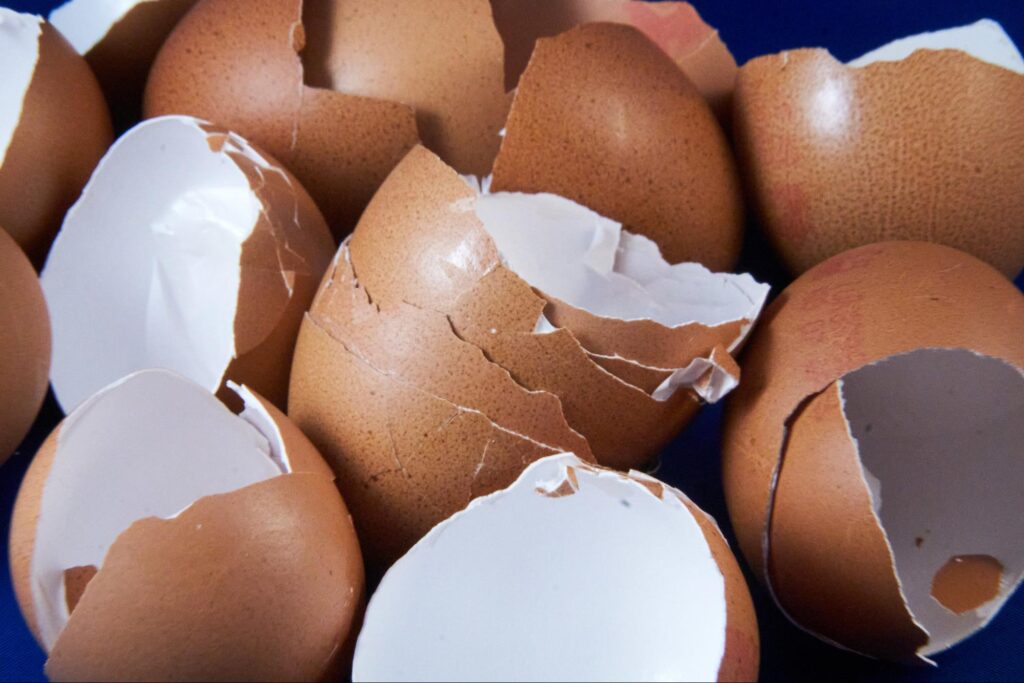
Eggshells—a great way to add organic fertilizers to soil and fulfilling the plant nutrient needs
Eggshells are an excellent source of calcium and help gardeners and houseplant owners treat the calcium deficiency of their plants. Calcium deficiencies in plants cause “blossom end rot” of pepper, watermelon, and tomato fruit. Moreover, it causes “bitter pit” in apples, “black heart” in celery, “brown heart,” and “tipburn” in leafy vegetables.
The calcium deficiencies in plants also damage plant roots and growth. So, adding eggshells to potted plants and garden soils will help the growers achieve their goal of healthy plants.
There are many ways to use eggshells in potted plants, such as mulch, compost, eggshell tea, eggshell fertilizer, and seed starter.
Use Eggshells in Potted Plants to Improve Soil Health

Add eggshells to the soil to improve the aeration and texture
Eggshells are made of calcium carbonate and, therefore, can be a great source of calcium for plants. So, adding eggshells to potted plants and garden soil will improve their nutrients and plant health. In addition, it is an inexpensive way to fertilize your plants organically.
To add calcium carbonate to the potted plants, crush eggshells and mix them with the soil of outdoor and indoor plants. These eggshells slowly release the nutrients into the ground and improve plant growth.
RELATED: Eggshells as Organic Pest Control Plus Their Other Amazing Benefits for Plants
Benefits of Eggshells to Indoor Potted Plants
The following are the fantastic benefits of eggshell fertilizer to the soil and plants:
- It feeds the plants with high levels of a calcium
- Calcium boost improves plant growth and strengthens the root
- Eggshells reduce the soil’s acidic pH levels and make it an ideal environment for plants that are neutral to alkaline soil pH.
- The calcium, potassium, and magnesium in eggshells speed up the root growth of plants.
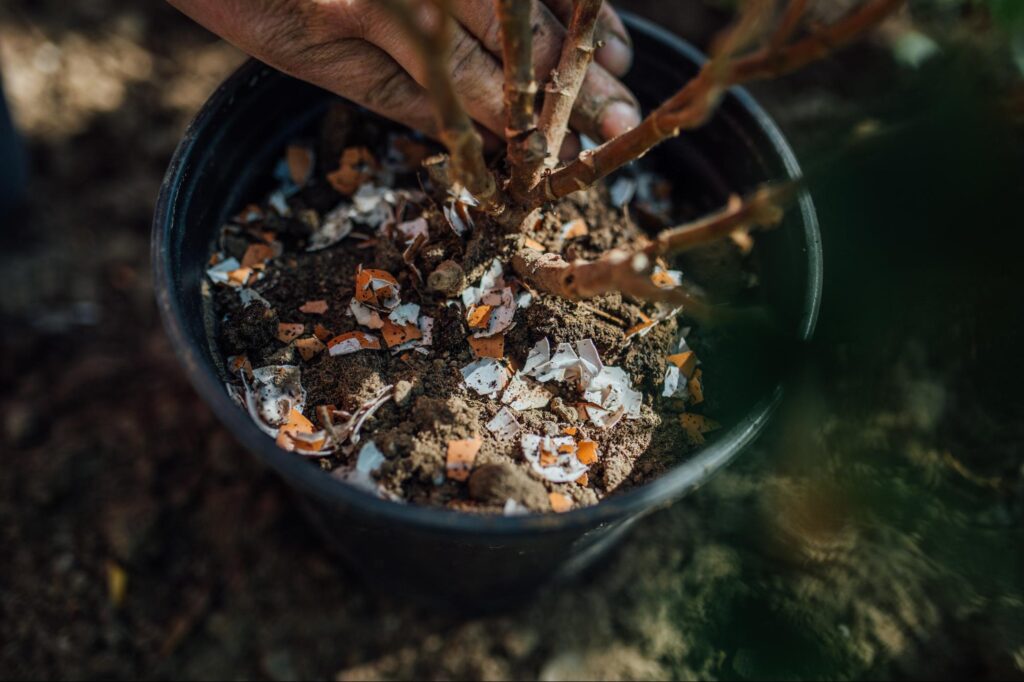
Fertilizing potted plants with eggshells (they are full of calcium)
Importance of Calcium Boost for Indoor Plants
Calcium is vital in plant growth and development like nitrogen, oxygen, phosphorus, potassium, and magnesium. It helps the plant in cell wall extension and is an essential component of new cells.
Thus, calcium ensures the plant’s rapid growth and development. Moreover, calcium provides stability to cell walls and cell membranes.
Plants absorb calcium from the soil through roots, which travels up to the parts where cells can use it. If calcium is deficient in the ground, the young leaves and new growths on plants will be badly hurt because calcium ensures the integrity of cell walls and membranes.
Many other factors influence the absorption of calcium by plant roots. For example, an excess abundance of potassium and magnesium in the soil will negatively affect calcium absorption by plants.
Use Eggshells to Deter Garden Slugs & Snails
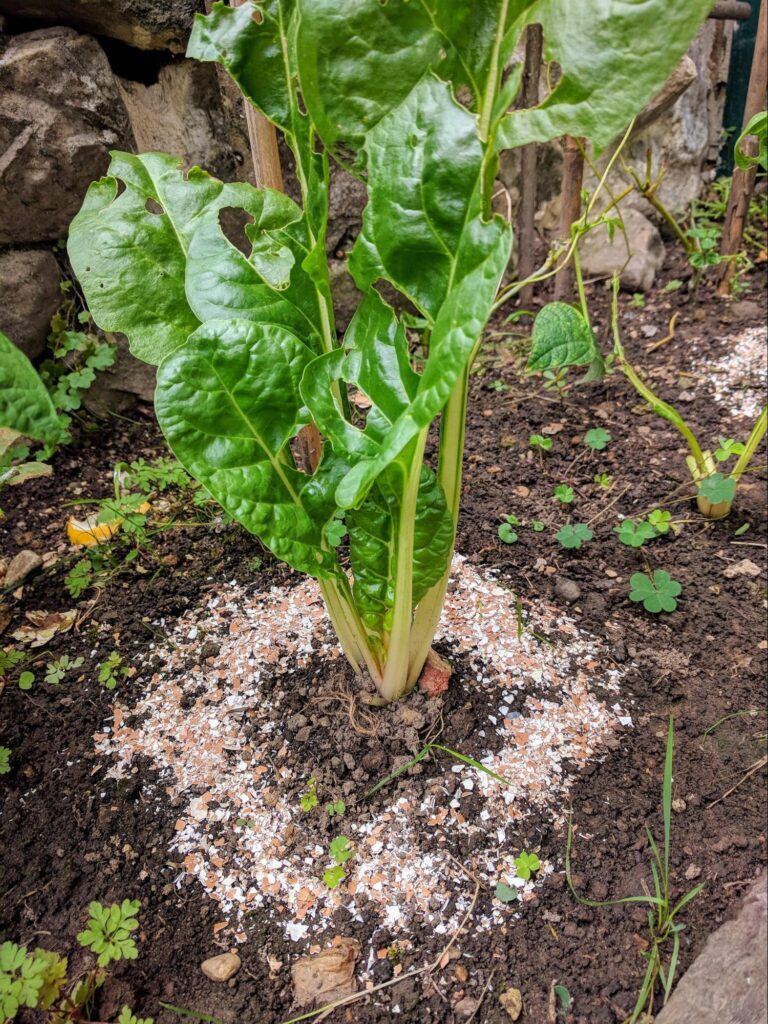
Eggshells can repel and kill the common garden pests—slugs & snails
Crushed eggshells protect the plants from garden snails and slugs. Unfortunately, the sharp edges of crushed eggshells pierce the soft bodies of slugs and snails, depriving them of bodily fluids and causing death.
To protect your plants, spread the ground eggshells around the base of your plants. They will act as a physical barrier and repel harmful garden pests (on the other hand, add minerals to the soil).
RELATED: A Necessary Guide on How to Use Moss Pole For Houseplants
Use Eggshells to Increase the Drainage of Potted Plants
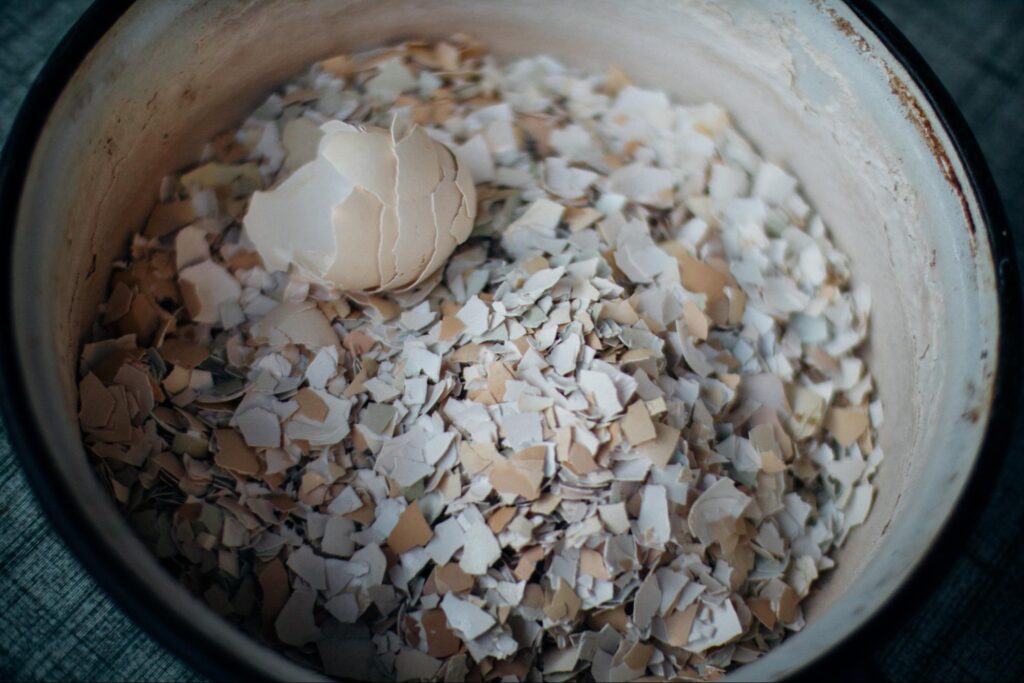
Crushed eggshells improve the drainage of potted plants
Crushed eggshells help in the excellent drainage of potted plants. Add roughly grind eggshells into the bottom of potted plants. It will improve the soil drainage and feed the plant with calcium and other minerals. For example, it will provide the calcium-hungry roots of tomato plants and prevent the tomato fruit from a disease blossom end rot.
Use Eggshells as Seed Starters
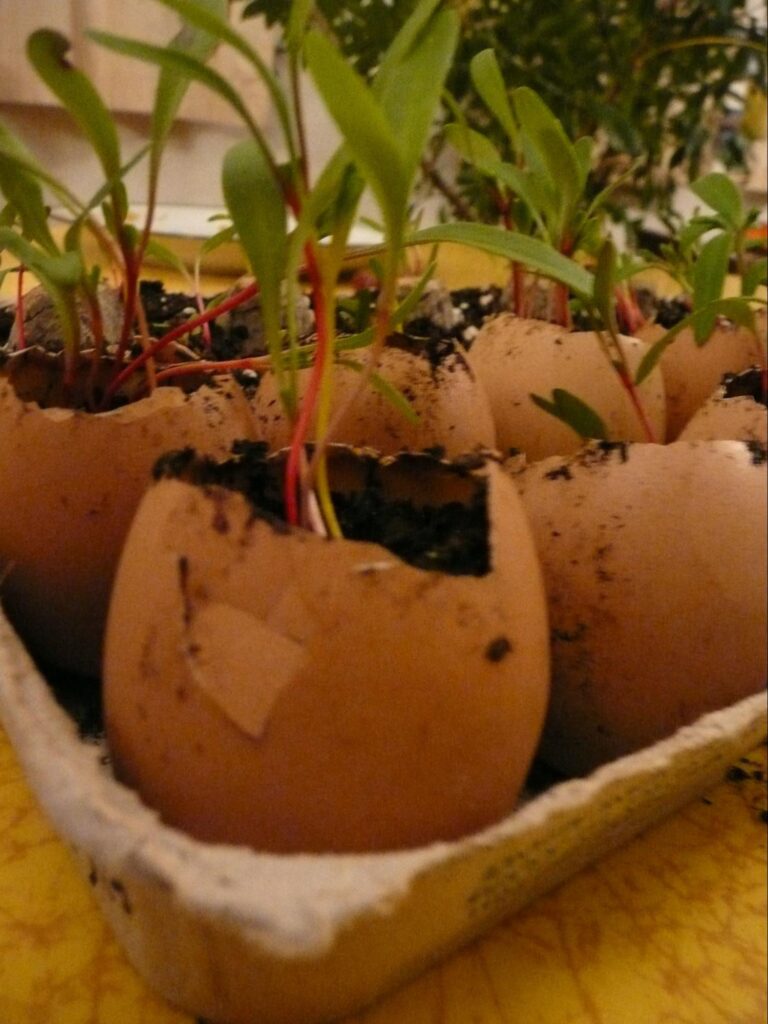
Eggshells make the perfect seed starters for your favorite plants
Eggshells are a fantastic byproduct of cooking and have tremendous benefits for plant health and blooming. In addition to the benefits mentioned above and the uses of eggshells, they are excellent seed starters.
To use them as seed starters, take the larger half of the eggshells and sterilize it for 30 minutes in the oven. Make a drainage hole at the bottom of the eggshell to drain out the excess water. Fill it with soil, plant succulent babies or seeds, and water it with a spray bottle to avoid excess moisture.
After germination and seed sprouting, transfer the plant into pots along with seed starter or eggshell as a source of organic fertilizer.
RELATED: Potassium for Houseplants: How to Use It for Happier and Healthy Plants?
Use Eggshells in Compost Pile
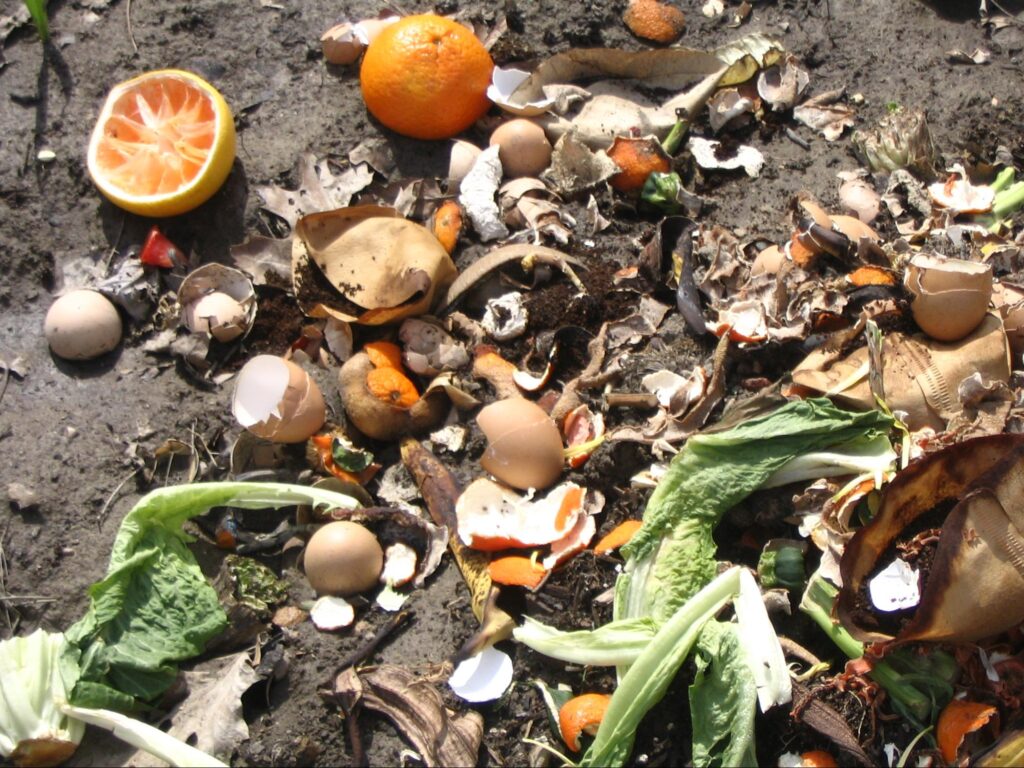
Eggshells in a compost bin and ready to add nutrients and minerals to mature compost
Another best use of eggshells is in a compost pile to harvest organic fertilizer for indoor houseplants. So, adding eggshells to the compost bin will increase calcium, minerals, and other proteins.
Ensure to thoroughly wash and dry the eggshells before adding them to the compost. Otherwise, they’ll attract pests. Also, finely ground the eggshells in a coffee grinder or food processor into a fine powder when adding to the compost pile. So, eggshells will benefit the potting soil and plants by assisting the growth and building new cell walls.
How to Make an Eggshell Liquid Fertilizer?
To prepare an eggshell tea or natural fertilizer for container plants:
- Boil one gallon of water in a large pot and add 8 to 10 chicken eggshells to the boiling water.
- Let it boil for 20 minutes and allow it to sit overnight.
- Strain the eggshell fertilizer and apply it to the soil surface for an extra calcium boost.
- Apply once a week to keep the house plants healthy and happy.
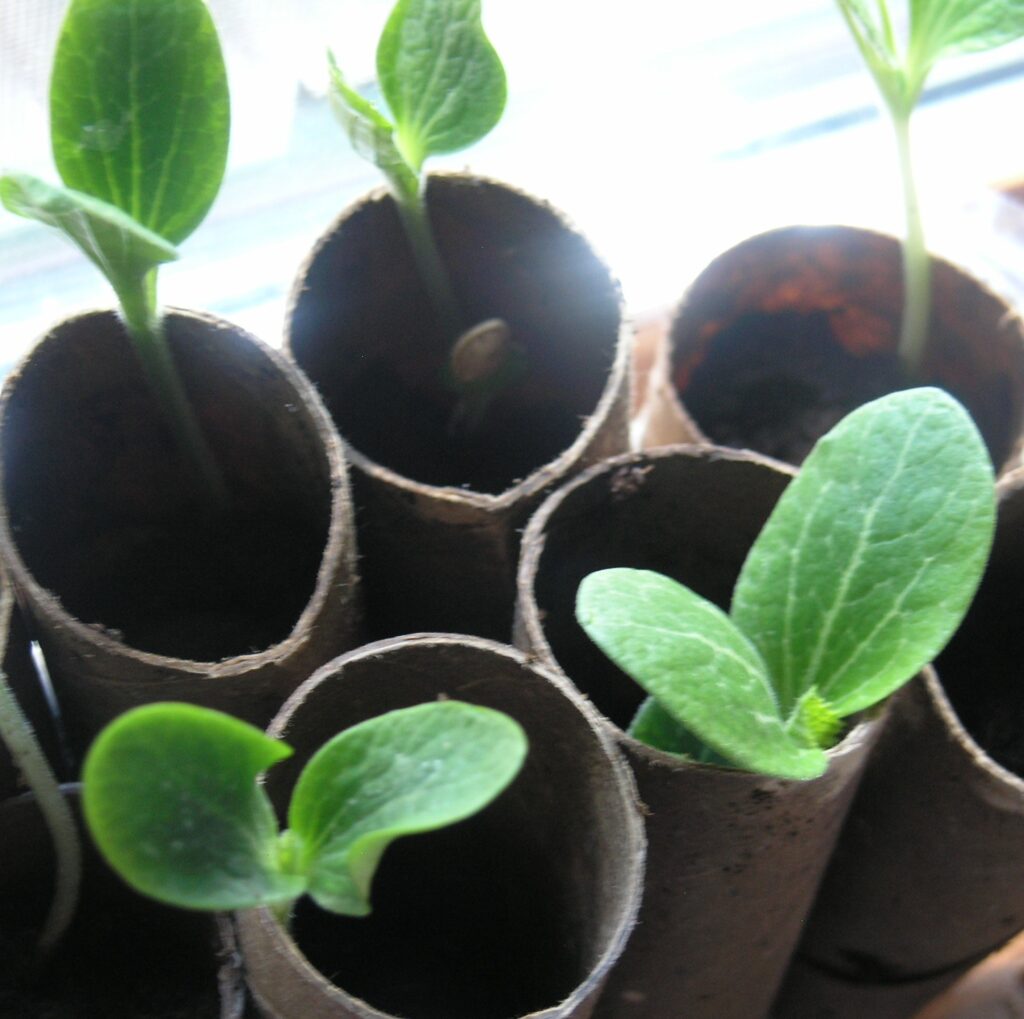
Lush green leaves and the healthy growth of zucchini seedlings result from regular eggshell tea.
Preparing and Crushing Eggshells for Houseplants
The following are the tools to use for crushing eggshells and making their natural fertilizers:
- Pestle and mortar
- Rolling bin
- Hard rock or brick to crush the raw eggshells
- Coffee grinder or food processor to obtain fine eggshell powder
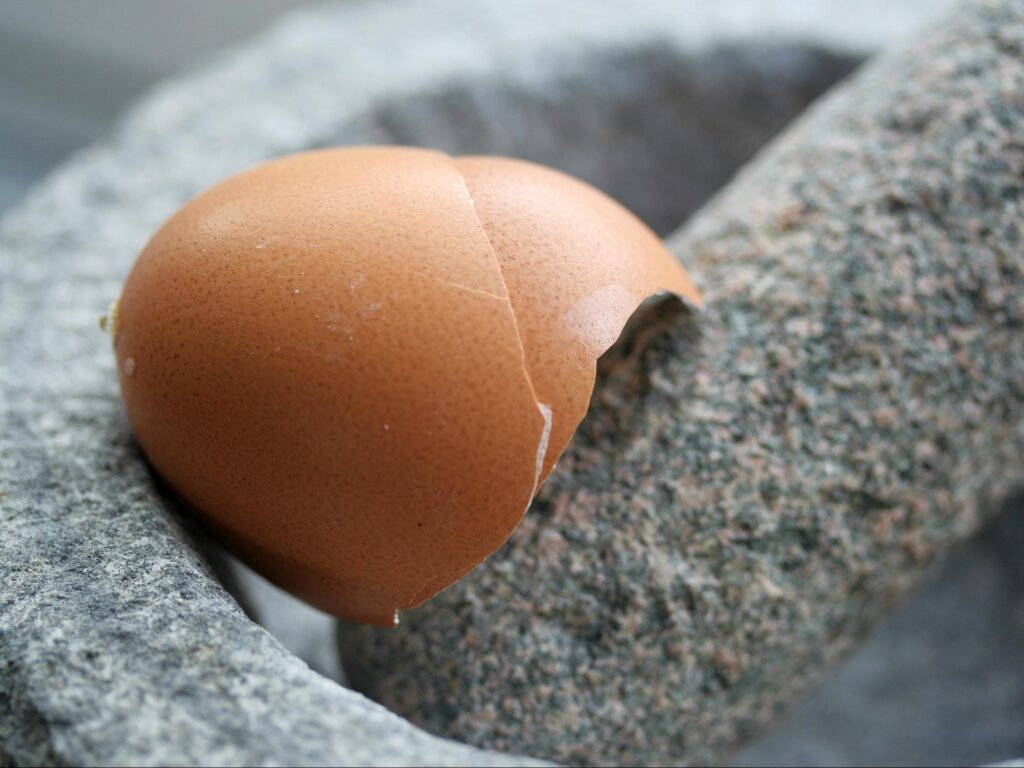
Pestle and mortar for eggshell crushing
You can add the fine powder of eggshells into acidic soil to lower its pH levels and make it suitable for plants that grow in neutral to alkaline soils.
When preparing the potting soil mix of your indoor or container plants, mix the fine powder of eggshells with soil to improve the soil nutrition and plant growth plus cell wall building.
Spread the raw crushed eggshells around your houseplant collection or garden borders to deter black ants, crawling caterpillars, and slugs and snails.
FAQs
Which Plants like Eggshells in the Soil?
The flower and fruit trees can benefit from eggshell tea. These plants are tomatoes, peppers, eggplants, apples, marigolds, strawberries, cucumbers, and lettuce. Unfortunately, all these plants are calcium hungry, and their deficiencies result in diseases, such as blossom end rot, tipburn, and black heart.
How Do You Add Nutrients to Indoor Plants Soil?
There are two ways to add nutrients to indoor plants soil through eggshells:
- Using crushed shells into fine powder to add to the potting soil
- Using eggshells tea
Before using the eggshell powder as an organic fertilizer for indoor houseplants, wash and dry them in an oven. Then grind the eggshells in a food processor to get the eggshell powder. Mix the eggshells with the soil or spread over the soil top and water it to assist the nutrient release in the soil. The finely crushed eggshells release calcium into the ground more rapidly than the large crushed pieces.
The second method is a readily available and easy one. Add 8 to 10 eggshells in hot water and let it sit overnight. Then, strain the mixture and apply it to the soil of houseplants.
Do Orchids Like Eggshells?
Eggshells are packed with calcium, potassium, and magnesium to support the growth and survival of orchids and other flowering plants. So, the best way is to apply eggshells to the potting mix of your orchids in the crushed form and then water it.
Are Tea Bags Good for Plants?
Green tea contains tannic acid and other nutrients critical for plant growth and acts as natural fertilizers for plant health. So burying the tea bags along with your plants will release nutrients into the soil, thus, improving the plant growth. Teabags will also retain the moisture in the ground and assist in a robust root system.
What Does Epsom Salt Do for Orchids?
Epsom salt does incredible wonders for orchids. They help the plant bloom and assist plants in chlorophyll production. Moreover, the magnesium in the Epsom salt helps the orchids construct new cells and keep the plant hydrated.
Epsom salt also prevents plants from growing pests such as slugs and voles.
What is the Best Homemade Fertilizer for Succulents?
The following are the best homemade fertilizers for succulents that greatly benefit them.
Banana peel is an excellent source of potassium essential to plant growth. When repotting your succulents, add banana peels into the pot or mix with soil to supplement the potassium needs.
Another best homemade fertilizer is coffee grounds. It is a source of many different nutrients, such as potassium, nitrogen, phosphorus, and many other trace minerals. To use coffee grounds for your succulents, mix the coffee with soil or apply it in liquid form. However, avoid adding too many amounts because it may attract the fungus gnats and fruit flies due to moist soil conditions.
The third best option for homemade fertilizer is eggshells. They provide the plants with high calcium, magnesium, and potassium levels.
How Long Do Egg Shells Last?
Eggshells will last for two years and fertilize your potted houseplants throughout the growing season. To make the eggshells readily release calcium into the soil, grind them into powder and apply them to the earth.
Does Boiling Eggshells Destroy Calcium?
Boiling does not destroy the calcium but releases the nutrients in the water, making it a calcium-rich food for plants. So, you can apply this water to your indoor and outdoor plants. In addition, the water contains amino acids, making it an incredible source of nutrients for plant healthy growth and reproduction.
Is Baking Soda Good for Houseplants?
Baking soda has antifungal properties and prevents plants from powdery and downy mildew. In addition, the regular applications of baking soda solution inhibit the fungal spore germination during the spring and help plants bloom.
How Do You Store Egg Shells for Fertilizer?
Eggshells can be stored in liquid fertilizer form for at least one week. First, add the eggshells to boiling water for 30 minutes, then let it cool and settle for 24 hours. Next, strain the mixture in a bowl and apply it to the soil of the container plants. Or you can store it in airtight jars for one week for later use.
Why Do My Indoor Plants Have Brown Tips?
Water stress and nutrient toxicity are the main factors for the brown tips of your indoor houseplants. If your houseplants appear dry and brittle with brown edges, it signifies water shortage and less frequent watering. It can be treated with regular watering but not overwatering.
The second reason is nutrient toxicity due to poor drainage. Therefore, salts build up at the bottom, impacting the plant’s nutrient absorption. Under severe salt build-up, it leads to root rot with wilting of aboveground plant parts.
What Makes Plants Grow Faster and Bigger?
You can make your houseplants grow faster and more significantly by providing good care, such as water, temperature, light, humidity, and regular pruning. Also, by treating them with fungicides and insecticides to prevent pest infestations, you can make them bigger and healthy with full blooms.
Are Eggshells Good for Indoor Plants?
Absolutely yes, eggshells are an excellent source of calcium nutrients for plants and soil. They are super and organic food from plants. It supports the root growth and aids in the building of new cell walls, and prevents blossom end rot in tomatoes and pepper. So, eggshells are a perfect food source for indoor houseplants.
Sources for Further Reading
- Polomski, R. F., & Doubrava, N. (2022, June 24). Composting | Home & Garden Information Center. Home & Garden Information Center | Clemson University, South Carolina. Retrieved August 7, 2022, from https://hgic.clemson.edu/factsheet/composting/
- Sawyer, A. (2020b). Coffee grounds, eggshells and Epsom salts in the home garden. UMN Extension. Retrieved August 7, 2022, from https://extension.umn.edu/manage-soil-nutrients/coffee-grounds-eggshells-epsom-salts
- Sherman, R. (2022, February 1). 2. Composting. NC State Extension Publications. Retrieved August 7, 2022, from https://content.ces.ncsu.edu/extension-gardener-handbook/2-composting
Editor’s Recommendations
What Is Leca and Is it Useful for Plants? All The Plant Care Questions and Answers
A Necessary Guide on How to Use Moss Pole For Houseplants
55 Plant Quotes To Inspire Every Plant Lovers and Keep Them Going







